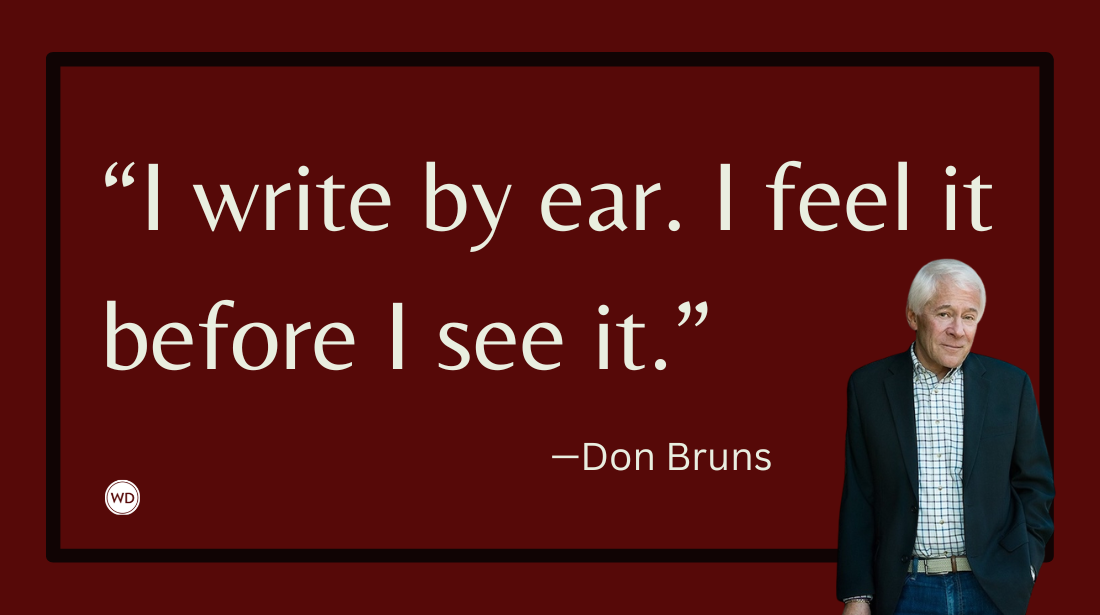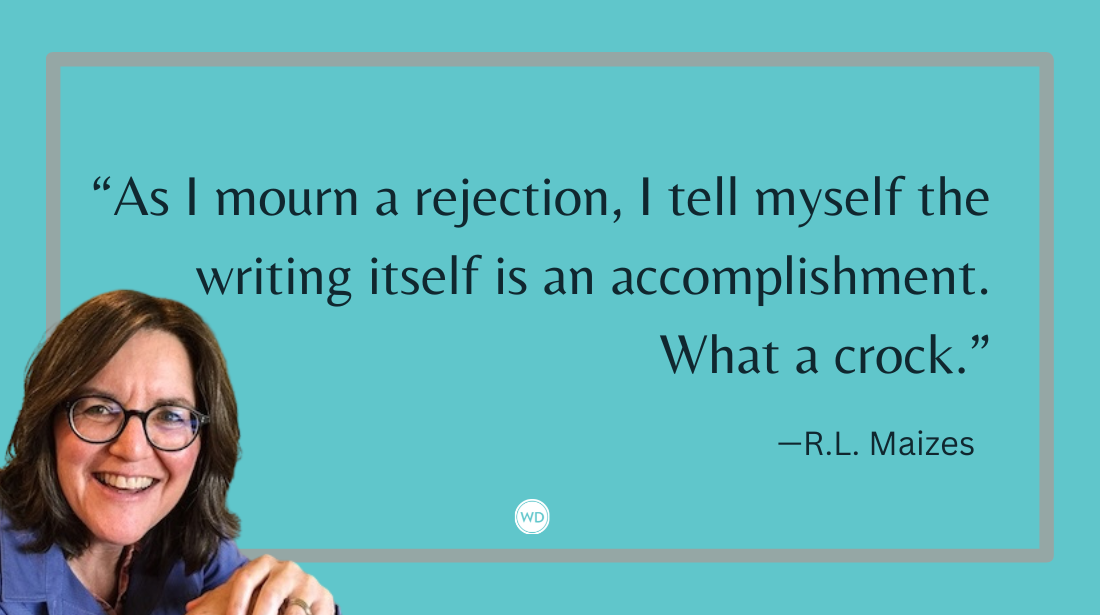I’m a Writer Who Hates Pitching—Help!
Do you find yourself stuck when it comes to pitching your ideas? Fear no more! Freelance writer, journalist, and Emmy-nominated producer Alison Hill gives her top tips for overcoming 4 problems to pitching.
Hi, I’m Alison and I’m a writer who hates pitching. If there was a 12-step program for freelancers with an aversion to querying editors, I’d be the first to sign up.
I’ve produced and hosted TV shows, talked on live radio, filmed US presidents, interviewed celebrities, and once even went undercover with an alleged cult, all without batting an eye. Yet the prospect of writing a pitch fills me with dread.
I generate ideas, formulate an angle, then write a rambling, wordy piece, get off track, rewrite it, decide it sucks, have to stop and meet my daughter off the school bus, then give up for the day. This is a continuous cycle evidenced by all the abandoned, half-written pitches cluttering my desktop.
Sometimes I successfully complete a query and actually hit send, receiving $1/word assignments. So I can do this! The question is—why don’t I do it more often?
Writers are a complicated bunch, riddled with self-doubt one moment, filled with passion the next. We procrastinate, make excuses and complain. Forget the silent bearded muse in the corner, what I need is a mom figure yelling: “Sit down and write that darn pitch. I want your butt in that chair in 1, 2 … don’t let me get to three!”
I haven’t given up yet because: a) I’m stubborn and b) I really want to make freelancing work. So, I’ve identified some pitching problems and asked writing experts for their advice and suggestions. Here’s what I found.
4 Problems to Writing Pitches
Problem 1. Inconsistency: I only send out the occasional query, because I hate pitching!
“You’re not alone. I don’t know many writers who like to do proposals,” says veteran freelance writer Mark Cantrell of Wake Forest, North Carolina. There are many reasons for this, he notes. For him, it was mostly social anxiety and fear of rejection. “Both are antithetical to the freelancing process,” Cantrell explains, “and the best way to get over them is just to keep pitching until they’re no longer show-stoppers, just annoyances.”
This business is tough and the competition fierce, as bestselling author and award-winning journalist Mike Sager reminds us. Nevertheless, determination and effort can yield amazing results. “You have to really want to succeed despite the odds,” Sager says. “It’s not easy, so the most important thing is your attitude. Tell yourself ‘I hate pitching, but I love writing more.’” And the pitching part, he adds, is like taking out the trash. Got to be done, so best get on with it. Then, he says, you can enjoy the good bits, writing, and the joy of seeing your work published.
Sager suggests easing into the process by creating good daily habits. “If you want to be a writer, then spend one hour every day doing a positive activity toward achieving your goal,” he says. “Do it because it feeds your soul and you have to dance.”
This business is a numbers game, explains Cantrell, so the more queries sent, the higher the odds of getting assignments.
And the more you do it, the better you become, which in turn builds confidence. “This is why I’m a big believer in pitching as much as you possibly can,” says award-winning journalist and author, Natasha Khullar Relph, in her book The Freelance Writer’s Guide to Pitching With Confidence. “I teach my students to send out a minimum of 30 queries in a month when they’re first starting out.”
(Editor’s Note: When the author originally interviewed Natasha Khullar Relph, her name was Mridu Khullar Relph. As a result, books mentioned and quoted by the author were written under the previous name.)
Problem 2. Time Investment: I write pitches that are too lengthy and take too long to write.
Experts agree that most pitches should be short but compelling enough to grab an editor’s attention, including the story’s angle, possible sources, why it’s relevant or timely, and why you’re the best person to write it.
“Just as you have to grab a reader’s attention quickly in an article, the same is true of editors,” says Cantrell, who himself once had a tendency to write lengthy pitches.
Sager agrees, noting, “Editors are inundated with e-mails and don’t have time to read long queries.” He suggests using bullet points or numbered pitches. “Write a series of five effective sentences and then send off your pitch,” he says.
“Keep your queries crisp and to the point,” adds Relph, reminding us that queries are essentially sales tools. “A query letter is as much about showing off your writing prowess as it is about making a sale,” she observes.
As for taking too long?
Set a timer! “I find it’s helpful to give myself a deadline when I’m working on pitches,” says editor and freelance writer Christina Wood of Delray Beach, Florida. And Relph suggests allotting an hour or two in the day devoted exclusively to pitching and keeping strictly within that time frame.
Problem 3. Frustration: Is it worth the effort? Why don’t I hear back?
Freelancers complain about investing time and energy into something with no guarantee of success and waiting for a response that sometimes never arrives. But when we do snag that coveted byline, it’s worth every ounce of frustration, each bead of sweat, wouldn’t you agree?
So how do we tackle the first hurdle—getting an editor’s attention?
“It’s like the NBA, if you want to play, you’ve got to find a game,” says Sager. “Don’t do what everyone else is doing, write something that no-one else would write—and it begins with pitching. Do something different.”
It’s our job as writers to find good ideas, says Relph. “Interesting stories pretty much write their own queries,” she adds, urging us to think long-term. “Query letters are not about getting assignments. Query letters are about building relationships. And it is those relationships that will lead to work.”
And how to guarantee an editor opens your email?
“Have a subject line so clever, so juicy, and so intriguing that they must open it up right away and read what it’s all about,” says Relph in the book: The Freelance Writer’s Guide to Query Letters That Sell.
It also helps to do our homework and pitch the right places. “A writer might have a good story, but if they pitch it to the wrong publication, it doesn’t do any good,” says Wood, adding, “an editor can easily tell if a writer hasn’t taken the time to familiarize themselves with the magazine.”
Cantrell recommends simultaneous submissions, sending the same query to every potential magazine at the same time. “This increases your chances of receiving an acceptance in a reasonable amount of time,” he says. And since preparing each pitch is time-consuming, Cantrell also suggests leveraging the research you’ve done by rewriting it slightly for a different market. “It’s possible to sell what is essentially the same article several times using this method,” he reports.
Problem 4. The Horror: I’m afraid of rejection.
But what if, after all the effort it’s all in vain? I spent two days laboring over an on-spec essay with a national publication. After an agonizing wait, I got the dreaded rejection email, and in a dramatic soap star voice, proclaimed: “That’s it, I’m done, I’m divorcing writing.” Of course, we made up and now we’re back together.
“Like dating, you’re putting yourself out there and being vulnerable, and one of the options is always rejection,” explains Mark Cantrell. “But unlike dating, it’s usually not you the editor is rejecting; your piece may simply not be what they’re looking for at the moment.” He adds, “It’s vital not take it personally, but it’s perfectly OK to mope a bit, have a piece of chocolate or a few beers, and then get back to pitching.”
Seems like great advice!
And the best thing to do after a rejection? “Send it out again,” says Relph. “Pitch it, and keep pitching it, especially if it’s a story you believe in.”
Rejection is a part of life for every freelancer, adds Relph, “the quicker you understand that it’s inevitable, the sooner you’ll allow it to wash off your back instead of letting it chip away at your confidence.”
Some writers (gasp) actually enjoy pitching. “It’s something I learned to love when I was starting out,” says Relph, “and has now become one of my favorite parts of the entire process.”
While not exactly a fan, Mark Cantrell has also embraced it. “The way I (mostly) got over the dread of pitching was just to do it a whole lot. It’s hard to stay afraid of something when you’re immersed in it.”
And when we do it often enough, we ‘pitch haters’ may eventually grow to love the process too—right?
Alison Hill is a freelance writer, journalist, and Emmy-nominated producer who writes for print and online publications. Since 2001, Alison has been a regular guest commentator on BBC radio news shows discussing US politics and current events. Before going solo, she was a PBS producer and director and also worked as an investigative journalist for a Welsh TV series. From hosting TV shows and creating online content to going undercover with a hidden camera, she’s done it all. Alison grew up in a tiny village in Wales and speaks fluent Welsh. She’s an avid hiker, who also loves camping, kayaking, and reading. She now lives in South Carolina with her husband, 8-year-old daughter, and two rescue cats.









